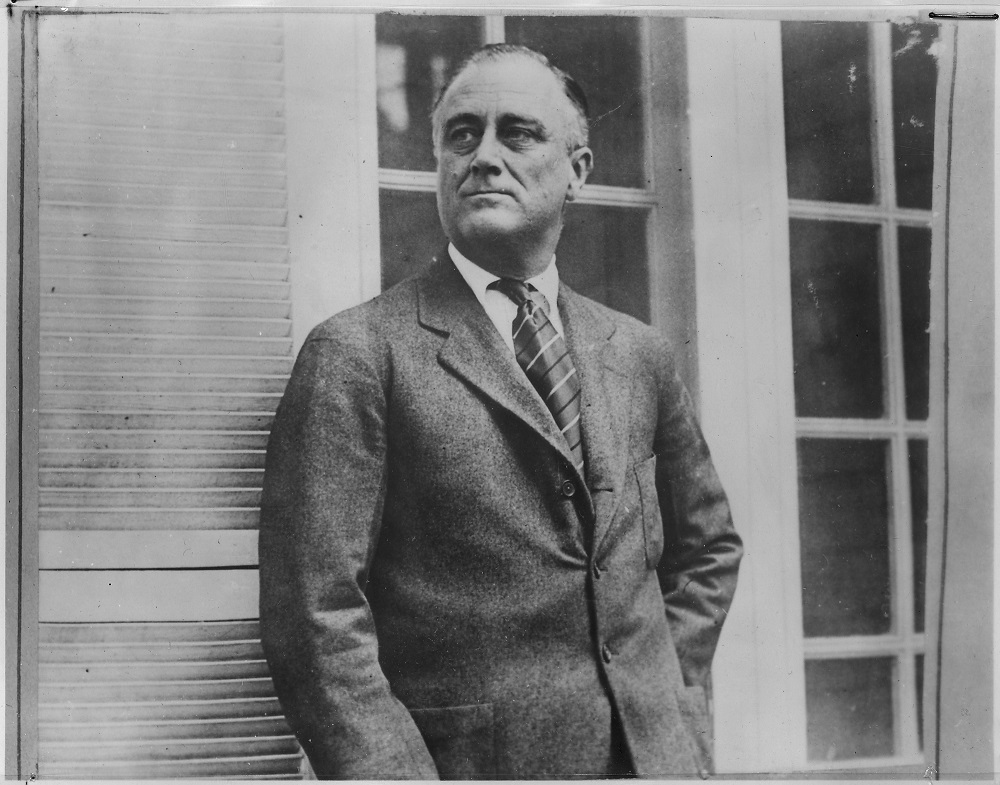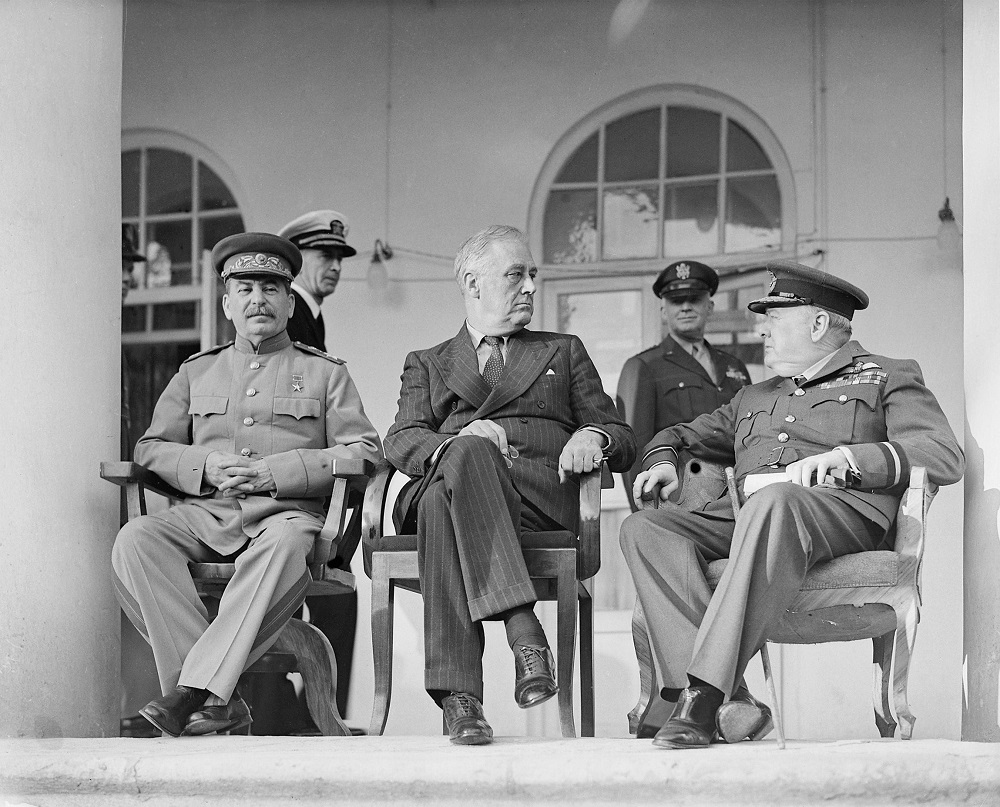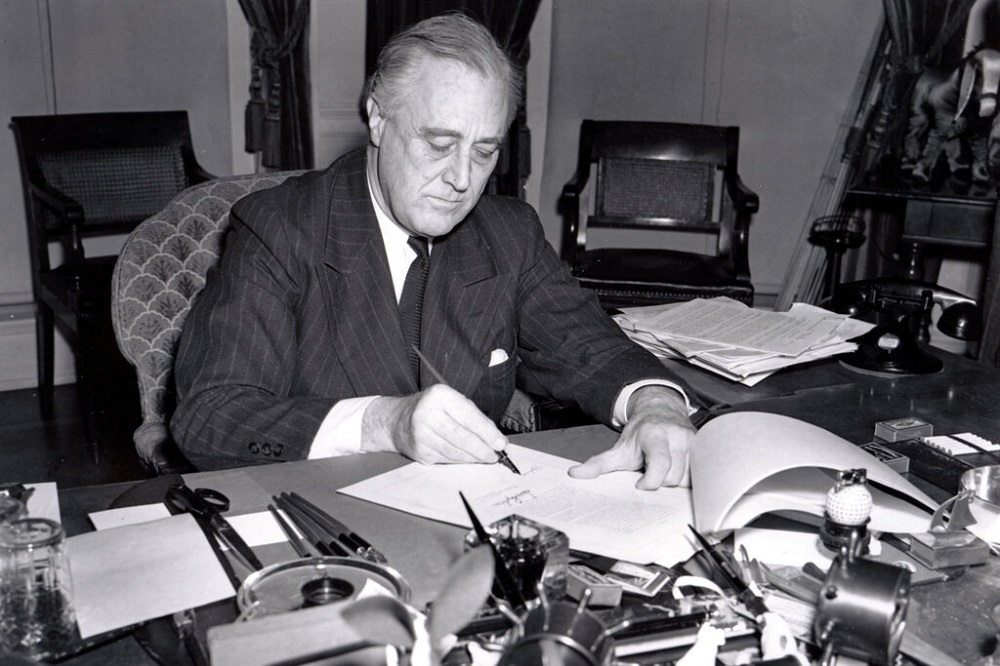What made Franklin D. Roosevelt more than just a “President” but a national hero?
Along with J.F. Kennedy, Franklin Delano Roosevelt was one of America’s most appreciated presidents. He wasn’t just the 32nd President of the United States; he was a game changer who managed to elevate America, get it through the Great Depression and World War II, and bring hope into citizens’ lives more than any other President.
Roosevelt is as well-known for his New Deal Coalition, fireside chats, and the paralysis that limited his mobility as for the enduring statement from his first inaugural address: “The only thing we have to fear is fear itself.”
After two nights of research on this topic, I decided to write an article solely about our former president. Therefore, in the following lines, we will explore some facts about Franklin D. Roosevelt that are often overlooked in school history classes. Curious? Let’s dive in!

He was born into a wealthy family
Born on January 30, 1882, in New York City, he was raised to become one of the best presidents the American nation has ever had. His father, James Roosevelt, worked in business and diplomacy, and his mother, Sara Delano, came from a family that had been on the Mayflower in Massachusetts.
Instead of hiring tutors, Sara taught young Franklin herself, giving him a sense of purpose. He eventually went to Harvard University, but when asked about his student years there, he often said that what he learned about economics was “completely wrong.” He was a very busy editor of the Harvard Crimson, though, and he wanted to work in public service from a young age.
Many people ask if there is a connection between Franklin D. Roosevelt and President Theodore Roosevelt. The men shared the same great-great-great-great-grandparents because they were fifth cousins. Nicholas Roosevelt, who lived from 1658 to 1742, was a distant relative in this instance. Franklin was related to a second son, and Theodore was related to one of Nicholas’ sons.
Stamp collecting was his main hobby
Franklin Delano Roosevelt had a passion for postage stamps that lasted a lifetime. As a child, he began collecting them, and later joined stamp clubs, went to stamp shows, and purchased rarities from stamp dealers. He even created some stamps himself. FDR once said, “I owe my life to my hobbies—especially stamp collecting.”
Another interest of his was ornithology and bird collecting. On his eleventh birthday, young Roosevelt was given a BB gun. Then, in his home county of Dutchess, New York, he shot, stuffed, and mounted birds of roughly 300 species. Even as president, FDR enjoyed going birdwatching.
He married his distant cousin
When it comes to interesting facts about Franklin D. Roosevelt, the marriage between him and his cousin, Eleanor Roosevelt, in 1905 garnered considerable interest and curiosity from the public. In 1903, when he was 22 and she was 19, he proposed to her. Many historians considered this marriage to be an alliance that would eventually become one of the most powerful and complex partnerships in American history.
Franklin’s infidelity strained their marriage, but Eleanor emerged as a powerful political force in her own right. She would later transform the role of First Lady by advocating for civil rights and women’s issues.
An illness cut short a political rise
By 1920, Roosevelt had already been the Assistant Secretary of the Navy and had been chosen to run for vice president with James M. Cox. Even though the Democrats lost, FDR became well-known across the country.
But in 1921, he was diagnosed with polio, which almost permanently stopped his political career. The illness made him unable to move from the waist down.
One thing is for sure: Franklin Delano Roosevelt refused to give up. He learned to stand with leg braces, and he eventually got back into politics, determined not to let his disability define him.
Maine and Vermont were the states that were against him
One of the most admirable facts about Franklin D. Roosevelt is his unmatched record of electoral victories. He was loved in the entire country; that’s a certainty!
In 1932, he beat Herbert Hoover, getting 472 Electoral College votes to Hoover’s 59. Four years later, the difference was even bigger: FDR got 523 out of 531 possible votes. In 1940 and 1944, he won two more landslide elections.
At the time, 46 of the 48 states in the Union supported Roosevelt at least once. In each of his four campaigns, only Maine and Vermont voted against him, preferring the Republican nominee.
Franklin Delano Roosevelt was almost assassinated
Seems like all the good Presidents America had were doomed to be taken away from us. Not many people know, but among the facts about Franklin D. Roosevelt, there is one that stands out: less than one month before Roosevelt’s first term started, on February 15, 1933, former bricklayer Giuseppe Zangara aimed a cheap revolver at FDR during a rally in Miami. He claimed, “I like Roosevelt personally, but I don’t like presidents.”
Before being taken down, Zangara shot five attendees, including Chicago Mayor Anton Cermak. Roosevelt was completely missed.
A call to action following the stock market crash
Roosevelt became known as a reformer after he barely won the governorship of New York in 1928. He fought for unemployment benefits and protections for workers.
When the Wall Street Crash of 1929 threw the country into economic chaos, FDR’s proactive approach was very different from President Herbert Hoover’s hands-off policies. This positioned him as the leading candidate for the Democratic nomination in 1932, and he won the presidency by a significant margin.
The New Deal and the Great Depression
Roosevelt gave one of the most famous inaugural speeches in U.S. history on March 4, 1933. With 25% of Americans out of work and the banking system falling apart, FDR didn’t waste any time, and he tried to do what was best for his country. He passed the Emergency Banking Act within a few days, which stabilized the system and won back the public’s trust.
His speech regarding the current situation and the measures he will implement was broadcast on the radio, spoke directly to Americans in their homes, and became a sign of open leadership.
FDR’s New Deal was more than just a policy; it was a way to survive. It brought in programs like the Civilian Conservation Corps (CCC), the Works Progress Administration (WPA), and Social Security to help people get back on their feet and make things better.
These programs put millions of people back to work, built infrastructure that will last, and made the federal government a more active part of the economy. The New Deal built the foundation for America’s modern middle class, even though conservatives didn’t like it.
Do you want to read in detail about the Great Depression? I got you! Check out one of my all-time favorite articles I wrote for History in USA right here: The Great Depression: Causes, Impact, and Recovery.
He considered Japanese internment camps before Pearl Harbor
The president signed Executive Order 9066 on February 19, 1942, which permitted the expulsion of between 110,000 and 120,000 Japanese Americans from their homes. They were held captive by force in isolated camps located throughout the United States. During the time of the mass internment, very few politicians opposed it.
For years, Roosevelt had contemplated the idea. He proposed creating a “special list” of Japanese citizens and non-citizens on the Hawaiian island of Oahu, who would be the first to be placed in a concentration camp in the event of trouble, in 1936, because he thought that a war between the United States and the Japanese Empire was likely.

Guiding America Through World War II
Roosevelt played a crucial role in organizing Allied strategy, developing close relationships with Joseph Stalin and Winston Churchill at crucial summits like Yalta and Tehran. Few question that his leadership played a crucial role in the eventual triumph over Nazi Germany and Imperial Japan, even though some criticize his agreements to Stalin.
The Manhattan Project and the creation of nuclear weapons were also results of his support for scientific research during the war, which ushered in a new era of American dominance in the world.
For those interested in where I got my information for this article, first of all, I watched The Roosevelts: An Intimate History, a very nice documentary about the Roosevelt family. It has 7 episodes of around 2 hours each. It might seem long, but trust me, it’s so nicely done you’ll be glued to your chair, and you won’t even realize how fast you’ll see it.
Besides this docuseries, I also read from cover to cover an amazing book called Franklin D. Roosevelt: A Political Life, written by Robert Dallek. Since it’s a biography that contains a ton of details, it helped me write this article and include as many facts about Franklin D. Roosevelt as possible, and present them to you in a friendly manner.
I really hope you enjoyed my article, and if you’re new around here, please hit that subscribe button and follow me for more relevant content about our nation’s history. See you next time!
